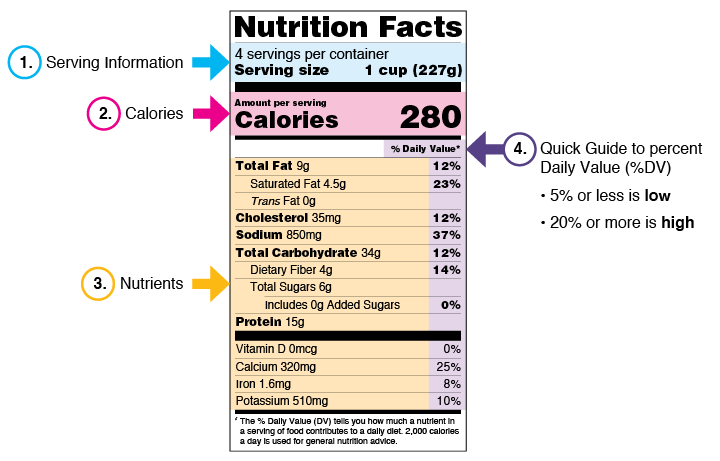Physical Health: Exercise, Nutrition, Sleep
Exercise
Regular physical activity can produce long-term health benefits. By being active, you will burn calories that you store from eating throughout the day and---it can be as easy as walking the dog or rigorous as running a marathon.
It is generally recommended to get at least two and a half hours each week of moderate-intensity aerobic physical activity. Sound a bit much with your busy college schedule.........that is only 30 minutes a day for five days. You need structure and schedule consider the gym. Not into the gym, consider using the stairs, walking rather than driving.
Whatever your choice you should consult your physician before starting a new activity. If you haven't been active in a while, start slowly and build up. Do what you can; some physical activity is better than none. The key is to have fun and put your body in motion.
Different Types of Physical Activity
Aerobic Activities make you breathe harder and your heart beat faster. Those that require moderate physical effort include but are not limited to: biking slowly, canoeing, ballroom dancing, general gardening, using your manual wheelchair, arm cycling, walking briskly and water aerobics. Vigorous activities are basketball, jumping rope, running or bicycling on hills, soccer, swimming laps and martial arts.
Not sure whether you are at a moderate or vigorous activity level? Try the talk test. If you can talk while you are active but you can't sing, then you are participating at a moderate level. If you can only say a few words without stopping to catch your breath, then you are engaging in vigorous activity.
Muscle-Strengthening Activities make your muscles stronger. Various activities can different muscle groups - legs, hips, back, chest, stomach, shoulders and arms. Consider a variety of activity to balance your work out and body. These might include but not limited to: lifting weights, push-ups, sit-ups, and working with resistance bands. Common household items such as bottled water and soup cans can also be used.
Bone-Strengthening Activities produce a force on the bones that promotes bone growth and strength. This force is commonly produced by impact with the ground. The good news: bone-strengthening activities can also be aerobic and muscle-strengthening like running, jumping rope, basketball, tennis and hopscotch.
Balance and stretching activities enhance physical stability and flexibility, which reduce the risk of injuries. Activities like basic stretches, dynamic stretching, yoga, pilates and tai chi prevent stiffness, enhance your balance and help keep your joints flexible while warming up to get ready for other activities. They may even help reduce your chance of injury during other activities.
No matter which activity you choose to engage in be sure you are doing it correctly for the best benefit and lessen your chances of injury.
- Walk the dog or a neighbor's dog
- Instead of calling friends, take a walk together to catch up
- Park your car as far away as possible to walk longer
- Walk or cycle to run errands
- Get off the bus one stop early and walk the rest of the way
- Choose the stairs instead of the elevator or escalator
- Wash the car
- Rake leaves or do yard work
- Plant and care for a garden
- Start your day with stretching
- End your day with calming yoga
- Sign up for dance lessons
- Experience the Great Outdoors and go for a hike or bike ride
- Grab a basketball or football for a quick game at a local park
- Join community sports team or league
- Participate in a local race
- Go swimming
Keep in mind that individuals with disabilities are just as capable and worthy of being active as someone without a disability and the activity does not have to be strenuous to provide positive benefits. Look for opportunities to be active in inclusive programs that are already in place.
Nutrition
The following is a quick guide to reading the Nutrition Facts Label

1. Serving Size
- Look at the number of servings in the package (serving per container) and the serving size.
- Compare your portion size (the amount you actually eat) to the serving size listed on the panel. If the serving size is one cup and you eat two cups, you are getting twice the calories, fat and other nutrients listed on the label.
2. Check Out the Total Calories and Fat
- Find out how many calories are in a single serving and the number of calories from fat. Calories provide a measure of how much energy you get from a serving of food. It’s smart to cut back on calories and fat if you are watching your weight.
3. Nutrients
- Limit saturated fats, sodium and added sugars. Eating less fat, cholesterol and sodium may help reduce your risk for heart disease, high blood pressure and cancer.
- Sugars: Total sugars include sugars naturally present in foods and beverages. Added sugars include sugars added during the processing of foods (sucrose or dextrose).
- Carbohydrates: There are three types of carbohydrates: sugars, starches and fiber. Eat whole-grain breads, cereals, rice and pasta plus fruits and vegetables.
- Protein: Most Americans eat more protein than they need, so a percentage Daily Value is not required on the label. Eat moderate portions of lean meat, poultry, fish, eggs, low-fat milk, yogurt and cheese, plus beans, peanut butter and nuts.
- Nutrients to get more of: Dietary Fiber, Vitamin D, Calcium, Iron, and Potassium.
4. Let the Percent Daily Values Be Your Guide
- Use percent Daily Values (DV) to help evaluate how a particular food fits into your daily meal plan.
- Daily Values are average levels of nutrients for a person eating 2,000 calories a day. A food item with a 5 percent DV of fat provides 5 percent of the total fat that a person consuming 2,000 calories a day should eat.
- Percent DV are for the entire day, not just one meal or snack.
- You may need more or less than 2,000 calories per day. For some nutrients you may need more or less than 100 percent DV.
The High and Low of Daily Values
- Low is 5 % or less. Aim low in total fat, saturated fat, trans fat, cholesterol and sodium.
- High is 20 % or more. Aim high in vitamins, minerals and fiber.
- Total fat includes saturated, polyunsaturated, monounsaturated and trans fat. Limit to 100 percent DV or less per day.
- Saturated fat and trans fat are linked to an increased risk of heart disease.
- High levels of sodium can add up to high blood pressure.
- Remember to aim for low percentage DV of these nutrients.
Get Enough Vitamins, Minerals and Fiber
- Eat more fiber, vitamins A and C, calcium and iron to maintain good health and help reduce your risk of certain health problems such as osteoporosis and anemia.
- Choose more fruits and vegetables to get more of these nutrients.
- Remember to aim high for percentage DV of these nutrients.
Check the Ingredient List
Foods with more than one ingredient must have an ingredient list on the label. Ingredients are listed in descending order by weight. Those in the largest amounts are listed first. This information is particularly helpful to individuals with food sensitivities, those who wish to avoid pork or shellfish, limit added sugars or people who prefer vegetarian eating.
Sleep
There are many challenges to regular, rejuvenating sleep in college. Sleeping in the dorms in a new bed, a new environment, having a roommate, or in an apartment is one of the many adjustments required when going off to college. Competing demands of class time, homework, outside school jobs, work-study, and a busy social life sometimes push a good night’s sleep to the bottom of the list. However, irregular and limited sleep times leading to sleep deprivation can have negative repercussions; including memory problems and difficulty with logical reasoning, hormone function imbalance, and decrease in both efficiency and ability to concentrate.
Eight hours of sleep a night is the average need, but individual needs can vary from 5 to as many as 10 hours of sleep to feel rested and refreshed. Most people know how much they need from past experience. Sleep debt accumulates over time – a late Friday night on the town and an all-nighter in a week will make a serious impact. Even though “catching up” on the weekends can feel like it helps repay some of the debt, irregular amounts of sleep can actually interfere with your sleep cycle and lead to sleep disorders such as insomnia.
Helpful Tips For Sleeping
1. Establish a regular sleep schedule. As much as possible go to sleep and wake up about the same time every day. Be realistic about class demands – if you are a night owl a 7am class may be next to impossible to make.
2. Exercise. Regular exercise can lead to higher percentage of deep sleep and few awakenings in the night. AVOID exercising just before bedtime – your body needs time to cool down and relax.
3. Reduce caffeine intake. Don’t consume caffeine within 4 hours of sleep time. Caffeine contributes to insomnia and disrupts sleep.
4. Decrease smoking. Large levels of nicotine in the blood can cause agitation and decreased restful sleep.
5. Watch the alcohol! Although too much alcohol seems to cause sleepiness, it disrupts the sleep cycle, causing less restorative sleep and leading to feeling less rested the next day or several days after.
6. Take a look at your diet. Eat a balanced diet, mostly fruits and vegetables, some meat and starch. Avoid heavy eating within 3 hours of sleep time. When considering vitamin supplements, such as vitamin B complex, consult your doctor.
7. If you nap… make sure it is before 3pm in the day and for no more than 20-30 minutes to avoid disruption of sleep at night.
8. Create a dark, quiet comfortable and cool sleep space. This may require investment in a small fan for white noise, ear phones or buds. Work out a compromise with your dorm-mate to have a quiet, lights out time.
9. Set up a bedtime routine that is restful. Not everyone needs this, but you know who you are. Some experts recommend reading, listening to soothing music, or deep breathing exercises
10. Make sleep a priority.

